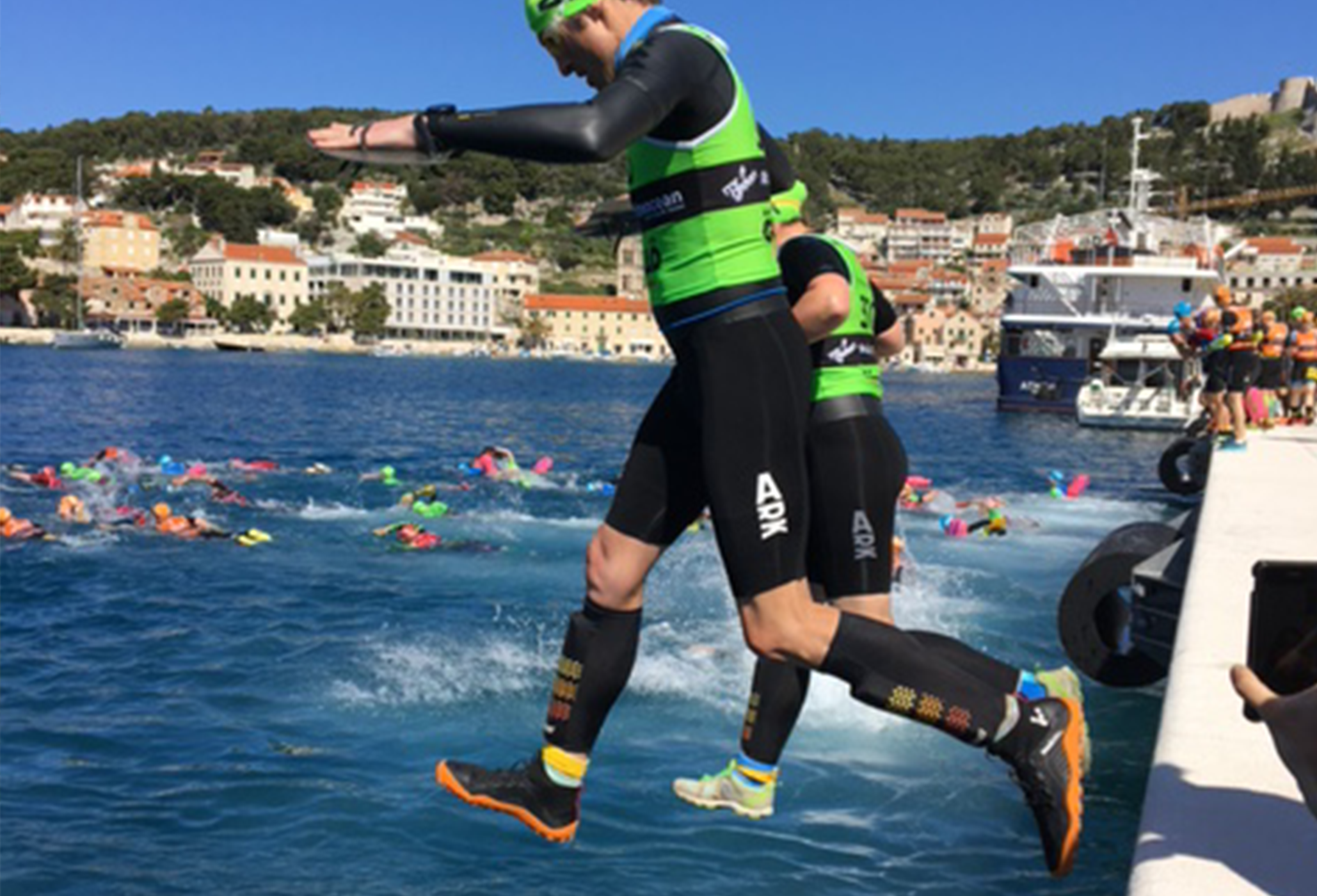Essential kit for swimrun: wetsuits and shoes
In part 1 of our guide to swimrun kit, trail running and open water swimming coach Jude Palmer covers all you need to know about wetsuits and footwear
Swimrun started with a group of people in a mix of standard wetsuits and other clothes, crossing the waters of Sweden with rucksacks on their backs, trainers on their feet and inflatable Nokia phones under their arms.
While times have moved on – and thankfully the inclusions of aid stations means that we can ditch the rucksacks – it is worth embodying that same ethos of ‘keep it simple’ and being resourceful when it comes to choosing what to wear. The same amount of fun, sense of adventure and performance can be gained whether you are wearing all the latest swimrun gear or the wetsuit you have borrowed and your favourite running shoes.
Wetsuits
For most swimrun events, unless they are short or the weather is hot, then a wetsuit will be needed. Not only do they provide warmth, but they also offer protection from cuts and grazes and a place to stash a beloved gel or two.
When choosing what wetsuit to wear, go for comfort and mobility around the shoulders first and foremost. The best wetsuit is the one which fits you well and suits your budget.
If you have an old swim wetsuit that you don’t mind cutting down, use that, or hire one to try before you buy.
Swimrun specific wetsuits are different from more traditional swim wetsuits in that they are generally short legged (but can also be full legged for extra warmth, or come in top and bottoms form). Like swimming wetsuits, swimrun specific suits are flexible around the shoulder, but unlike swimming wetsuits, they are flexible and thinner around the legs and hips, which helps with running.
Another key difference is that swimrun wetsuits often have a front zip. Many have both a front and back zip to help you get the wetsuit on and off on longer or warmer sections of the runs – known as ‘cabbing down’. Some also have removable arm sleeves, giving another way of managing temperature. Other features can include a safety whistle and tougher fabric over key areas to protect the neoprene from snags and tears when scrambling over rocks when transitioning in or out of the water.

Above: The point at which trainers stop being used for running. Note the floaty socks instead of a pull buoy.
Trainers
What to wear on our feet seems like the most hotly commented subject on any of the swimrun forums. Yes, it is very tempting to buy swimrun specific shoes, but remember the key function of shoes for a swimrun is for running in. How well they drain, how high your feet float in the water (or not) with them on is secondary to how comfortable they are and well suited to the ground you are running on.
If you have a favourite pair of trainers to run in and they suit the type of runs for the swimrun you are doing, carry on and use them. If you need more of a ‘trail specific’ trainer, then get on and make that change earlier rather than later and be prepared to spend time letting your feet, achilles etc. adjust to any difference in ‘drop’: how high the heel is from the floor. A good starting point can be to try the trail versions of your favourite brand.
The thing that both a wetsuit and shoes do is to change your body position in the water when swimming. The former adds flotation and the latter reduces it. Whether you choose to swim front crawl or breaststroke, the best thing to do before you decide whether to use floaty socks, calf guards or a pull buoy is to get in the water with your suit and shoes on and see what happens when you simply lie flat on the water and then also swim. Chances are, with shoes on, your feet will sink, create drag and make swimming harder / slower. This is why you will see most swimrunners with either a large wedge of foam or similar between their thighs and/or neoprene or similar material calf guards to bring their feet back up to nearer the surface. The former brings the hips up and the latter the feet. The trick is to find out what works for you and your swimming. If you like a bit of DIY, grab any pull buoy you might find at the pool and get creative. But be sure to check the event rules for how big you can go.
Wearing shoes isn’t usually mandatory at events, but if you chose not to, you have to work out how to carry them on the swims and face an exit from the water which may not be all that comfortable on the feet.
The more time you spend wearing your swimrun wetsuit and shoes in training, the better. If you can’t go for a swim, get in the shower and then go running. This is a great way of working out what chafes, how well things fit, and for making friends as you hot foot it through your local area wearing rubber.
Image: Pierre Mangez/ÖTILLÖ Catalina
Jude is a Trail Running and Swimrun Coach based in Surrey. A lover of running and swimming on the wild side, her first swimrun was Breca Buttermere in 2016 and since then she has taken part in over 15 including Loch Gu Loch, the Hokey Cokey, Bantham, ÖTILLÖ Isles of Scilly, 1000 Lakes, Engadin, and Hvar, Breca Jersey and Swimrun Germany, Allgau. Her aim is to swimrun as many UK events as possible and to enthuse others to take part in what she thinks is the best fun ever. Find her at @runsurreyhills.
